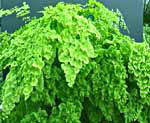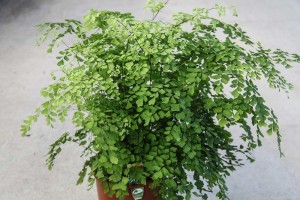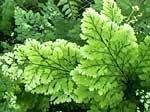Tip of the Week – Focus on Maidenhair Ferns
 Maidenhair Ferns all belong to the Genus Adiantum…there are about 200 species and within the species an amazing array of different cultivars. The leaves/foliage can be layered, cut back, tasselled, variegated, lime green, dark green, light green, pink/red tipped,serrated, scalloped, large, tiny. They can be black stemmed, tall upright, tall weeping, compact weeping & compact upright. Here a a few of the species we send:
Maidenhair Ferns all belong to the Genus Adiantum…there are about 200 species and within the species an amazing array of different cultivars. The leaves/foliage can be layered, cut back, tasselled, variegated, lime green, dark green, light green, pink/red tipped,serrated, scalloped, large, tiny. They can be black stemmed, tall upright, tall weeping, compact weeping & compact upright. Here a a few of the species we send:
Adiantum tenerum – Many Cultivars
Adiantum raddianum – Many Cultivars
Adiantum aethiopicum – True Maidenhair
Adiantum bessoniae
Adiantum caudatum – Walking Maidenhair
Adiantum formosum – Giant Native
Adiantum fragrans
Adiantum hispidulum – Rosy Maidenhair
Adiantum macrophyllum – Big Leaves
Adiantum peruvianum – Silver Dollar
Adiantum trapeziforme – Diamond Maidenhair
Two of the species we deal with most have some of the best cultivars. The Adiantum raddianum cultivars are more cold hardy than the tenerum cultivars.
The Adiantum tenerum cultivars require warmer conditions originating from tropical America.
The genus name Adiantum comes from the Greek meaning not wetting referring to the ability of the leaves to shed water without getting wet!
This is the key to Maidenhairs…do not let them get too wet. Yes they like some moisture but not to drown in it. That’s why you will see them growing in rock crevices near waterfalls…. Maidenhair Care:
1. Keep foliage dryer rather than constant wet.
2. Water by lifting foliage or an under the pot water system.
3. Maids require good light but this does vary and many are happy under 70% shade.
4. Water regularily in the growing season ease off when cold.
5. If required cut back to ground zero!
Some people burn the cut fronds & debris but all you need do is remove any dead leaf etc on the pot surface. Do this and you will get back an improved plant.
6. You must use a very well drained potting mix. The one it came in was suitable for the conditions in the nursery it came from but may not be ideal for your conditions.
7. Fertilise with with slow release pellets and use half strength liquid fertiliser regularly in the growing season.

